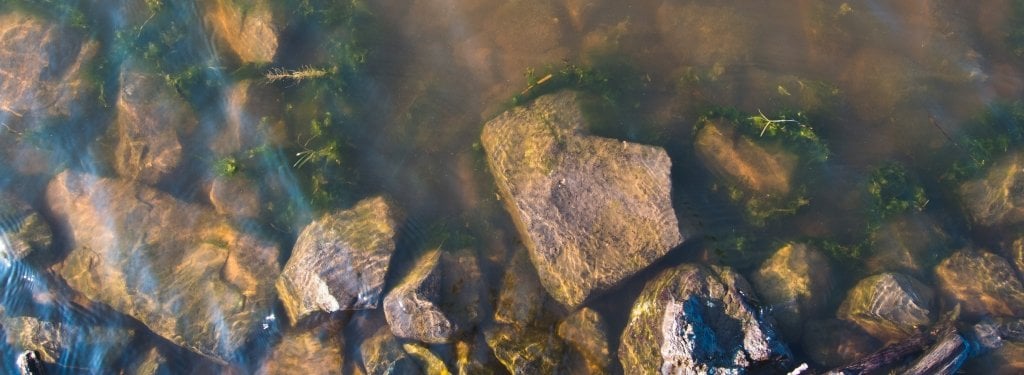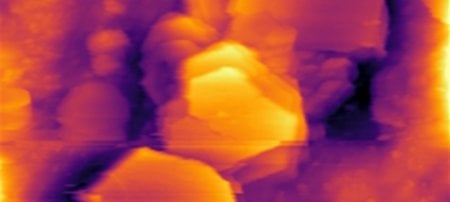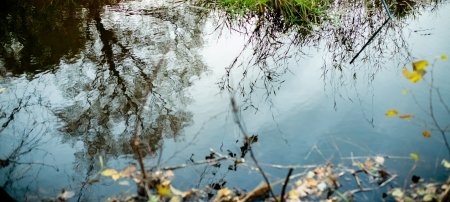Our new mass spec examines various chemical samples at much finer resolution that ever before. Water treatment processes greatly benefit from the mass spectrometer’s analyses.
In the United States, more than 130 million chemicals are registered with the American Chemical Society, and roughly a few thousand of them are in daily use. However, the U.S. Environmental Protection Agency regulates a fraction of that—about 60 organic compounds.
Chemicals are ubiquitous in this country. Have a headache? Take ibuprofen. There are many chemicals in cosmetics. Agriculture operations use herbicides and pesticides. And many of these chemicals one way or another end up in our waterways.
Enter “the Princess”. That’s the affectionate nickname of Michigan Tech’s Ultrahigh Resolution Hybrid Ion Trap Orbitrap Mass Spectrometer (Orbitrap Elite), which is housed in the Chemical Advanced Resolution Methods Lab (ChARM) in the Great Lakes Research Center. The Princess is capable of parsing through the millions of chemical species within a given sample, separating mass peaks so that researchers can identify them. The level of differentiation the mass spectrometer is capable of also gives researchers high confidence in their results.
This video provides a glimpse inside the ChARM Lab.
Which is good, because some of the most challenging problems today—on land, in the water, and in the air—require first identifying which chemicals are present, even in the tiniest amounts.
Dissolved organic matter interferes with water treatment
The Princess has contributed to one such project that could help future wastewater treatment plants become more successful at treating water.
In a new paper published in the journal Water Research (DOI: 10.1016/j.watres.2018.02.015), Michigan Tech researchers discussed the transformations of dissolved organic matter in water when exposed to ultraviolet (UV) and UV-based advanced oxidation processes (AOPs). These interactions include UV/hydrogen peroxide (UV/H2O2), UV/free chlorine and UV/persulfate.
Without the Orbitrap Elite’s capabilities, such a deep analysis of the molecular transformations would not have been possible. But why are these transformations important in the first place? Simply put, the presence of dissolved organic matter interferes with the water treatment process.
“Wastewater treatment technology is primarily used to remove trace organic contaminants such as pharmaceuticals, personal care products, pesticides and herbicides from wastewater effluent to reduce the negative impact to ecological systems and natural aquatic environments such as the Great Lakes,” says Daisuke Minakata, assistant professor of civil and environmental engineering and corresponding author on the paper. “However, the presence of background dissolved organic matter is detrimental to the efficient removal of these trace chemicals.”
Many water treatment plants were designed in the 1950s and 1960s, and they were not designed to effectively remove chemicals common today, the majority of which are not biodegradable. Consequently, trace concentrations of those chemicals are present in effluent—the water discharged from the treatment plants into lakes, rivers and streams. Although found in extremely small concentrations, just nanogram or micrograms, the toxicity is not well understood in human bodies and ecosystems.
If the water treatment plants are busy targeting dissolved organic matter rather than trace chemicals, they aren’t doing their job. And unfortunately, water pollution is a growing problem globally.
Mass spectrometry offers insight into better water treatment
“Water is a non-renewable resource exploited all over the world; there is more pollution than remediation,” says Lathika Varanasi, a doctoral candidate in environmental engineering and co-author/lead author on the study. “It’s affecting the life of water.”
Therefore, selecting the right kind of treatment method for a particular area’s water and waste is important to maximize water plant efficiency and effectiveness. But to determine an appropriate treatment method, the water itself—and the dissolved organic materials present in all sources of water—need to be characterized.
Daisuke and Varanasi joined Maryam Khaksari, ChARM research scientist, and Lynn Mazzoleni, ChARM’s co-director and associate professor of chemistry, and Erica Coscarelli, a master’s degree student. Using the Orbitrap Elite, the team visualized the ways dissolved organic matter react to UV and AOPs. For the first time, the group was able to take a complex mixture of dissolved organic matter, visualize the impact of various radical species, and then evaluate the transformation.
These are attractive and promising approaches for the removal of contaminants because of the high reactivity of active radical species produced by UV-AOPs with a wide variety of organic contaminants. People studied the limited properties of dissolved organic matter for decades; ultrahigh mass spectrometry is only now coming on the scene.
"We may never know the exact properties of dissolved organic matter. But systematic investigation like this published study will help engineers select a favorable UV-based advanced oxidation processes by knowing the molecular-level properties."
The Princess can detect substances far smaller than peas under mountains of mattresses. The Orbitrap Elite is ready to take on the tiny engineering challenges that create wastewater treatment conundrums.
Michigan Technological University is an R1 public research university founded in 1885 in Houghton, and is home to nearly 7,500 students from more than 60 countries around the world. Consistently ranked among the best universities in the country for return on investment, Michigan's flagship technological university offers more than 185 undergraduate and graduate degree programs in science and technology, engineering, computing, forestry, business, health professions, humanities, mathematics, social sciences, and the arts. The rural campus is situated just miles from Lake Superior in Michigan's Upper Peninsula, offering year-round opportunities for outdoor adventure.






Comments